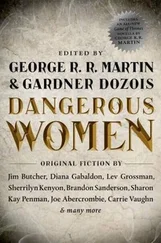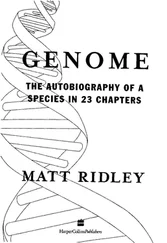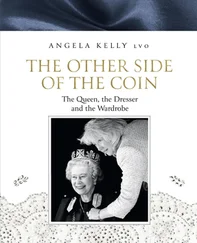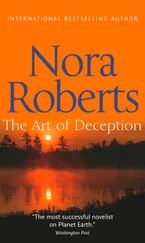The Queen - Matt Ridley
Здесь есть возможность читать онлайн «The Queen - Matt Ridley» весь текст электронной книги совершенно бесплатно (целиком полную версию без сокращений). В некоторых случаях можно слушать аудио, скачать через торрент в формате fb2 и присутствует краткое содержание. Жанр: Старинная литература, на английском языке. Описание произведения, (предисловие) а так же отзывы посетителей доступны на портале библиотеки ЛибКат.
- Название:Matt Ridley
- Автор:
- Жанр:
- Год:неизвестен
- ISBN:нет данных
- Рейтинг книги:4 / 5. Голосов: 1
-
Избранное:Добавить в избранное
- Отзывы:
-
Ваша оценка:
- 80
- 1
- 2
- 3
- 4
- 5
Matt Ridley: краткое содержание, описание и аннотация
Предлагаем к чтению аннотацию, описание, краткое содержание или предисловие (зависит от того, что написал сам автор книги «Matt Ridley»). Если вы не нашли необходимую информацию о книге — напишите в комментариях, мы постараемся отыскать её.
Matt Ridley — читать онлайн бесплатно полную книгу (весь текст) целиком
Ниже представлен текст книги, разбитый по страницам. Система сохранения места последней прочитанной страницы, позволяет с удобством читать онлайн бесплатно книгу «Matt Ridley», без необходимости каждый раз заново искать на чём Вы остановились. Поставьте закладку, и сможете в любой момент перейти на страницу, на которой закончили чтение.
Интервал:
Закладка:
Exactly the same problem plagues the world of the genes. It is, oddly, the reason that boys are different from girls.
::: 92 :::
The Red Queen
WHY ARE PEOPLE NOT HERMAPHRODITES?
None of the theories discussed so far explains why there are two separate genders:' Why is every creature not a hermaphrodite, mixing its genes with those of others, but avoiding the cost of maleness by being a female, too? For that matter, why are there two genders at all, even in hermaphrodites? Why not just give each other parcels of genes, as equals? "Why sex? " makes no sense without
" why sexes? " As it happens, there is an answer. This chapter is about perhaps the strangest of all the Red Queen theories, the one that goes under the unprepossessing name of " intragenomic conflict: " Translated, it is about harmony and selfishness, about conflicts of interest between genes inside bodies, about free-rider genes and outlaw genes: And it claims that many of the features of a sexual creature arose as reactions to this conflict, not to be of use to the individual: It "gives an unstable, interactive, and historical character to the evolutionary process."'
The thirty thousand pairs of genes that make and run the average human body find themselves in much the same position as seventy-five thousand human beings inhabiting a small town.
Just as human society is an uneasy coexistence of free enterprise and social cooperation, so is the activity of genes within a body.
Without cooperation, the town would not be a community. Everybody would lie and cheat and steal his way to wealth at the expense of everybody else, and all social activities—commerce, government, education, sport—would grind to a mistrustful halt: Without cooperation between the genes, the body they inhabit could not be used to transmit those genes to future generations because it would never get built.
A generation ago, most biologists would have found that paragraph baffling: Genes are not conscious and do not choose to cooperate; they are inanimate molecules switched on and off by chemical messages: What causes them to work in the right order and create a human body is some mysterious biochemical program, not a democratic decision: But in the last few years the revolution begun by Williams, Hamilton, and others has caused more and GENETIC MUTINY AND GENDER
::: 93
more biologists to think of genes as analogous to active and cunning individuals. Not that genes are conscious or driven by future goals—no serious biologist believes that—but the extraordinary teleological fact is that evolution works by natural selection, and natural selection means the enhanced survival of genes that enhance their own survival: Therefore, a gene is by definition the descendant of a gene that was good at getting into future generations. A gene that does things that enhance its own survival may be said, teleologically, to be doing them because they enhance its survival.
Cooperating to build a body is as effective a survival "strategy " for genes as cooperating to run a town is a successful social strategy for human beings.
But society is not all cooperation; a measure of competitive free enterprise is inevitable. A gigantic experiment called communism in a laboratory called Russia proved that. The simple, beautiful suggestion that society should be organized on the principle "from each according to his ability, to each according to his need " proved disastrously unrealistic because each did not see why he should share the fruits of his labors with a system that gave him no reward for working harder: Enforced cooperation of the Communist kind is as vulnerable to the selfish ambitions of the individual as a free-for-all would be. Likewise, if a gene has the effect of enhancing the survival of the body it inhabits but prevents that body from breeding or is never itself transmitted through breeding, then that gene will by definition become extinct and its effect will disappear.
Finding the right balance between cooperation and competition has been the goal and bane of Western politics for centuries.
Adam Smith recognized that the economic needs of the individual are better met by unleashing the ambitions of all individuals than by planning to meet those needs in advance. But even Adam Smith could not claim that free markets produce Utopia. Even the most libertarian politician today believes in the need to regulate, oversee, and tax the efforts of ambitious individuals so as to ensure that they do not satisfy their ambitions entirely at the expense of others. In the words of Egbert Leigh, a biologist at the Smithsonian Tropical Research Institute, "Human intelligence has yet to design
::: 94 :::
The Red Queen
a society where free competition among the members works for the good of the whole. "' The society of genes faces exactly the same problem. Each gene is descended from a gene that unwittingly jos-tled to get into the next generation by whatever means was in its power. Cooperation between them is marked, but so is competition.
And it is that competition that led to the invention of gender.
As life emerged from the primeval soup several billion years ago, the molecules that caused themselves to be replicated at the expense of others became more numerous. Then some of those molecules discovered the virtues of cooperation and specialization, so they began to -assemble in groups called chromosomes to run machines called cells that could replicate these chromosomes efficiently. In just the same way little groups of agriculturalists joined with blacksmiths and carpenters to form cooperative units called villages. The chromosomes then discovered that several kinds of cells could merge to form a supercell, just as villages began to group together as tribes. This was the invention of the modern cell from a team of different bacteria. The cells then grouped together to make animals and plants and fungi, great big conglomerates of conglomerates of genes, just as tribes merged into countries and countries into empires.'
None of this would have been possible for society without laws to enforce the social interest over the individual, selfish drive; it was the same with genes. A gene has only one criterion by which posterity judges it: whether it becomes an ancestor of other genes.
To a large extent it must achieve that at the expense of other genes, just as a man acquires wealth largely by persuading others to part with it (legally or illegally). If the gene is on its own, all other genes are its enemies—every man for himself. If the gene is part of a coalition, then the coalition shares the same interest in defeating a rival coalition, just as employees of Hertz share the same interest in its thriving at the expense of Avis.
This broadly describes the world of viruses and bacteria.
They are disposable vehicles for simple teams of genes, each team highly competitive with other teams but with largely harmonious relations among team members. For reasons that will soon become GENETIC MUTINY AND GENDER
::: 95
apparent, this harmony breaks down when bacteria merge to become cells and cells merge to become organisms. It has to be reasserted by laws and bureaucracies.
And even at the bacterial level it does not entirely hold true. Consider the case of a new, supercharged mutant gene that appears in a bacterium. It is superior to all other genes of its type, but its fate is determined largely by the quality of its team. It is like a brilliant engineer finding himself employed by adoomed, small firm or a brilliant athlete stuck on a second-rate team: Just as the engineer or the athlete seeks a transfer, so we might expect that bacterial genes would have invented a way to transfer themselves from one bacterium to another:
Читать дальшеИнтервал:
Закладка:
Похожие книги на «Matt Ridley»
Представляем Вашему вниманию похожие книги на «Matt Ridley» списком для выбора. Мы отобрали схожую по названию и смыслу литературу в надежде предоставить читателям больше вариантов отыскать новые, интересные, ещё непрочитанные произведения.
Обсуждение, отзывы о книге «Matt Ridley» и просто собственные мнения читателей. Оставьте ваши комментарии, напишите, что Вы думаете о произведении, его смысле или главных героях. Укажите что конкретно понравилось, а что нет, и почему Вы так считаете.












